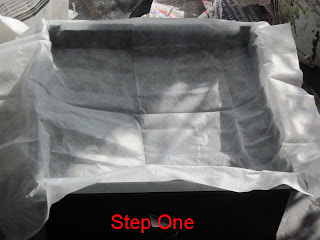 I recently joined a GIY forum, (Grow It Yourself}, hoping to find many more like minded people, I was surprised, to find that still only 2% of the population grow their own veg.The site receives very few posts although it is well set. It not a case that people don't know about it, it has been well publicised on local radio and in the press. There seems to be no reason why more people don't grow there own here, after all Ireland is land rich, and has a very high unemployment rate so time is not the reason. I suspect it is the brain washing from TV commercials where even if a super market is running the ad. it is always for pre packaged food and veg.
I recently joined a GIY forum, (Grow It Yourself}, hoping to find many more like minded people, I was surprised, to find that still only 2% of the population grow their own veg.The site receives very few posts although it is well set. It not a case that people don't know about it, it has been well publicised on local radio and in the press. There seems to be no reason why more people don't grow there own here, after all Ireland is land rich, and has a very high unemployment rate so time is not the reason. I suspect it is the brain washing from TV commercials where even if a super market is running the ad. it is always for pre packaged food and veg.People have come to believe that this is where food comes from and they have a wide choice. Is this really a fact , the wide choice? Certainly there are many brands, but it is all the same things, rarely will you find an artisan produced food, and when it comes to meat you have two choices, Organic or meat that says nothing. You will seldom find anything labelled 'Free Range' apart from eggs or chicken and if you look at the regulations for 'Free Range' it is meaningless. Other silly labels, Farm Fresh, Country Fresh, Freedom Food ( this gives the very basic welfare standards allowed without being prosecuted for cruelty). The only way that you can buy meat products or eggs that are GMO free is by buying Organic, and again in the case of eggs or poultry, apart from the feed, once again the term is largely meaningless.
In California in a few days time they are having the chance to vote as to whether they want their food labelled GM or not. Proposition 37, Sadly I think the yes vote will be defeated due to the vast amount of money that Monsanto and other's of their ilk have thrown at the advertising campaign for a no vote. Three reasons 'THEY' have put forward against labelling food is that it will cost more to produce the labels, the consumer will become confused ( really?) and it might scare people. OK I will give them the last one, it might, and rightly so.
Americans seem to think that we in the EU have our food labelled, well we don't. Meat and eggs are mainly produced here using GMO ingredients and they are not labelled.
We recently came across packets of pop corn in a well know German super market chain, on looking at the label carefully we found that the maize had come from either the US or Spain, both countrys are contaminated by GMOs so it is highly doubtful that this Pop Corn is GM Free, but there is no label to tell the consumer this fact.
On the GIY site there is a young farmer wanting ideas of how to feed his pigs not using soya because of the GMO status , he has a market for his pork providing he can source non GM protein. Apart from going Organic, his choices are limited.
Apart from producing your own food there is little you can do to avoid GMs, herbicides and pesticides. Which is why we chose to do it, we have plenty to chose from veg wise plus the rabbits, chickens, ducks and eggs, and now we have mushrooms.































